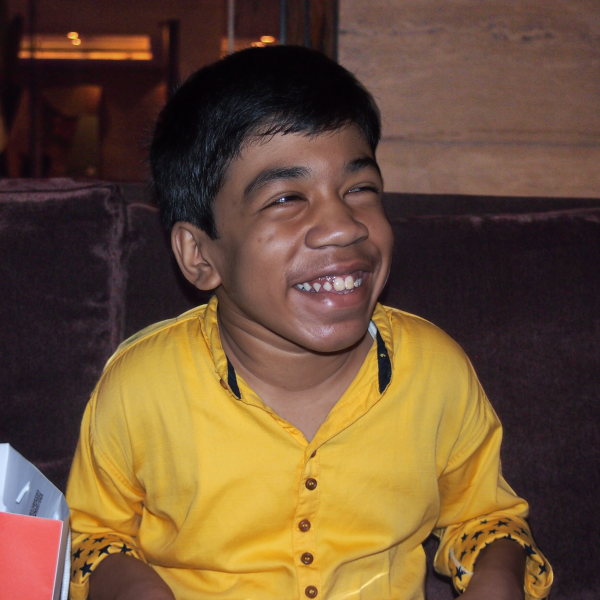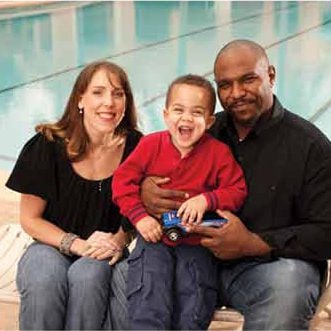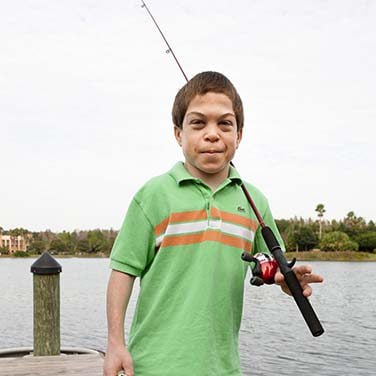The Hunter syndrome gene
Understanding the DNA changes in Hunter syndrome
All living things are made of cells which contain deoxyribonucleic acid (DNA). DNA is split up into sections known as genes, which store our genetic information. These genes determine many human traits: from eye colour, to whether you can roll your tongue, to whether you will inherit a genetic disease such as Hunter syndrome.
DNA molecules are large and complex therefore they are packaged into bundles called chromosomes to make them more compact and allow storage in cells. In human cells there are 23 pairs of chromosomes, with one chromosome in a pair coming from each parent. A person’s sex is determined by one specific pair of chromosomes. Females have two X chromosomes while males have one X and one Y chromosome, therefore a mother will pass on one of her X chromosomes to her child, while a father can pass on either an X or Y chromosome.
Hunter syndrome affects approximately 1 in 162,000 new-born babies, the majority of whom are male. It is known as a recessive X-linked inherited disease. But what does this actually mean?



Inherited X-linked disease
Children with Hunter syndrome have a faulty gene located on their X chromosome, which has been passed down to them from their mother.
Recessive disease
This means that if individuals have a single healthy copy of the gene, this will override the faulty gene and the disease will not present.
Females versus males
Females have two X chromosomes therefore if they inherit one faulty gene this can be compensated for by the normal gene on their other chromosome and they do not usually exhibit disease. Therefore they are classed as a ‘carrier’ for Hunter syndrome and have the potential to pass on this faulty gene to their children in the future.
Females can develop Hunter syndrome only in very exceptional circumstances, as result of rare genetic events in the baby during pregnancy.
Males have only one X chromosome. This means that if they inherit the faulty gene there is no normal gene to compensate for any damage, and they will develop Hunter syndrome.
The mutated gene
Enzymes are molecules within cells that break down specific body materials. In Hunter syndrome, the gene that codes for the enzyme iduronate-2-sulfatase (I2S) is faulty, i.e. the normal version has been mutated. Over 500 different types of I2S gene mutations have been identified in children affected by Hunter syndrome. Consequently, the I2S enzyme is either absent or severely deficient in Hunter syndrome patients, which causes a variety of health issues as outlined below. (Please see ‘The broken metabolism in Hunter syndrome’ for more details on health issues that occur)

Figure 1: The genetics of Hunter syndrome

Clusters of symptoms
Children with Hunter syndrome present with a variety of signs and symptoms, however, these generally occur as a recognisable ‘cluster’ of childhood illnesses with an average symptom onset of 18 months. Common symptoms that may occur early in the disease’s course are:
- Facial features such as prominent brow, broad nose and thick lips
- Recurrent chest infections
- Chronic runny nose
- Upper airway restriction, including noisy breathing and snoring
- Frequent ear infections and subsequent hearing loss
- A distended abdomen (caused by liver or spleen enlargement)
- Umbilical and inguinal hernias
- Frequent or long term diarrhoea
- Joint stiffness, which may lead to restricted movement
- Delays in childhood development (e.g. delayed walking and speech)
Who should I speak to if I’m concerned my child may have Hunter syndrome?
It is crucial to remember that many of these signs and symptoms are common in childhood, but it is the combination of them that may indicate Hunter syndrome. If you think that your child has two or more symptoms of Hunter syndrome, speak to your doctor.
-
Find out more about the signs and symptoms of Hunter syndrome
Take a look around huntersyndrome.info to learn more about the causes, signs and symptoms and real-life stories of families affected by Hunter syndrome, and speak to your doctor if you have any questions.
